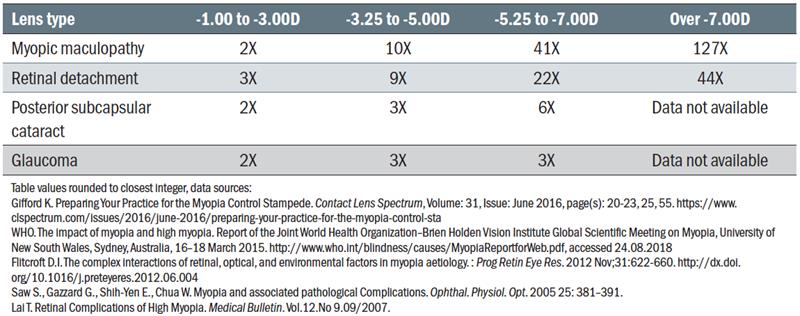
Myopia is a significant global public health and socioeconomic problem and has been steadily increasing in recent decades. It is estimated that by 2050 around 50% of the world’s population will be myopic.1
With increased myopia the risk of sight threatening conditions increases almost exponentially with even lower levels of myopia being of concern. Research suggests that ocular diseases potentially leading to sight impairment or blindness are doubled with a refractive error as low as -2.00D (table 1).
 Table 1: Risk of sight impairment or blindness increases significantly with higher refractive error
Table 1: Risk of sight impairment or blindness increases significantly with higher refractive error
There are several theories as to the aetiology of myopia, however, the mechanisms involved in the onset and progression remain unclear. These proposed theories include mechanical tension, accommodation lag and peripheral refraction or relative peripheral hypermetropic defocus theory (RPHD). Each of these theories may not be exclusive of each other and in addition there are also complex physiological and biological processes involved that are affected by environmental and genetic factors, so myopia should be regarded as a multifactorial condition.2 The Miyosmart lens has been designed to create peripheral myopic defocus within the eye which reduces the elongation trigger associated with uncorrected myopia or traditional spectacle lenses. The results are clear, Miyosmart reduces myopia progression.
Register now to continue reading
Thank you for visiting Optician Online. Register now to access up to 10 news and opinion articles a month.
Register
Already have an account? Sign in here
